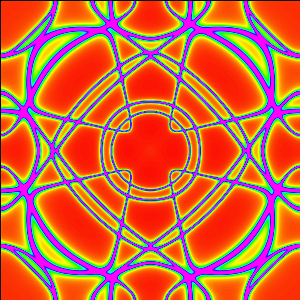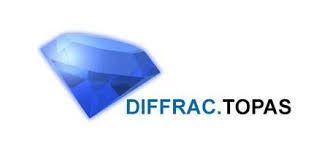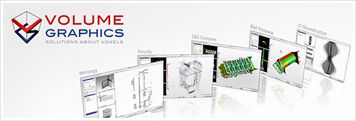Software

SHELX
SHELX is a set of programs for the determination of small (SM) and macromolecular (MM) crystal structures by single crystal X-ray and neutron diffraction. In the program suite: SHELXT extracts the Laue group, cell dimensions and types of element present , solves the structure using data expanded to space group P1, and then uses the P1 phases to find the space group. SHELXS solves small (up to about 100 unique non-hydrogen atom) structures by direct methods. it is based on the classical tangent formula of Karle and Hauptman, but uses phase annealing and includes information from the weak reflections via the negative quartets. etc. etc,-> refer to the SHELX home page

silx
The silx project aims at providing a collection of Python packages to support the development of data assessment, reduction and analysis applications at synchrotron radiation facilities. The purpose is to deliver reading/writing of different file formats, data reduction routines and a set of Qt widgets to browse and visualize data.
simex_platform
simex_platform is a python library to facilitate setup, execution, and analysis of simulations of experiments at advanced laser light sources. As an example, consider a molecule radiated by highly brilliant, ultrashort x-ray pulses such as delivered by an X-Ray Free Electron Laser (X-FEL). The simulation platform allows to combine tools and codes for the simulation of each step of the experiment: Generation of radiation in the photon source, propagation through optics and waveguides to the interaction point, photon-matter interaction, scattering of the radiation into the far field and detection of the latter. The platform provides slots and interfaces for the various simulation steps.

SPR-KKR
The SPRKKR band structure package allows to calculate the electronic structure of arbitrary 3-D periodic systems, including systems with chemical disorder. The treatment of 2-D periodic systems (e.g. surfaces) can be done at the moment only by using an auxiliary system having three dimensional periodicity or by making use of the cluster approximation. The electronic structure calculation can be done in a non-relativistic, scalar-relativistic as well as fully relativistic mode. In the scalar-relativistic mode paramagnetic as well as spin-polarized systems can be treated, including non-collinear spin structures and arbitrary spin spirals. In the fully relativistic mode, paramagnetic as well as spin-polarized systems with an arbitrary spin configuration can be dealt with. On the basis of the electronic structure calculation, many different properties can be investigated with a strong emphasize on response functions and spectroscopic properties.
Steca
The stress and texture calculator Steca is an interactive, graphical data reduction program for neutron and x-ray materials diffractometers.
SYRMEP Tomo Project (STP)
SYRMEP Tomo Project (STP) has been developed for the users of the SYRMEP beamline of the Elettra synchrotron facility (http://www.elettra.eu) to perform the digital image processing required by parallel beam propagation-based phase contrast CT experiments. The underlying idea is to let users perform post-beamtime optimization, fine tuning and/or additional tests with common hardware at their home institution. The software has been also developed for teaching and educational purposes. SYRMEP Tomo Project is available only for Windows 64-bit machines.

tomogui
Graphical user interface for tomography reconstruction. Handle - FBP (based on silx FBP) - ART transmission and fluorescence (based on freeart)

tomwer
Tomwer is offering tools to automate acquisition and reconstruction processes for Tomography. It contains: - a library to access each acquisition process individually - gui and applications to control main processes (reconstruction, data transfert...) and execute them as a stand alone application. - an orange add-on to help users defining their own workflow (http://orange.biolab.si)

TOPAS
Profile and structure analysis software for powder and single crystal data XRD. Profile and structure analysis by integrating a large wealth of profile fitting techniques as well as related applications. Single Line Fitting Indexing (LSI and LP-Search methods) Whole Powder Pattern Decomposition (Pawley and Le Bail methods) Ab-initio structure determination in direct space from powder and single crystal data Rietveld structure refinement Quantitative Rietveld analysis

Unscrambler X
Commercial software product for multivariate data analysis, used for calibration of multivariate data which is often in the application of analytical data such as near infrared spectroscopy and Raman spectroscopy, and development of predictive models for use in spectroscopic analysis of materials. Unscrambler X was an early adaptation of the use of partial least squares (PLS). Other techniques supported include principal component analysis (PCA), 3-way PLS, multivariate curve resolution, design of experiments, supervised classification, unsupervised classification and cluster analysis.

VASP
VASP is an ab initio simulation package based on DFT. It is used for atomic scale materials modelling, e.g. electronic structure calculations and quantum-mechanical molecular dynamics from first principles. VASP computes an approximate solution to the many-body Schrödinger equation, either within density functional theory (DFT), solving the Kohn-Sham equations, or within the Hartree-Fock (HF) approximation, solving the Roothaan equations. Hybrid functionals that mix the Hartree-Fock approach with DFT are implemented as well. Furthermore, Green's functions methods (GW quasiparticles, and ACFDT-RPA) and many-body perturbation theory (2nd-order Møller-Plesset) are available. Central quantities, like the one-electron orbitals, the electronic charge density, and the local potential are expressed in plane wave basis sets. The interactions between the electrons and ions are described using norm-conserving or ultrasoft pseudopotentials, or the projector-augmented-wave method. To determine the electronic ground state, VASP makes use of efficient iterative matrix diagonalisation techniques, like the residual minimisation method with direct inversion of the iterative subspace (RMM-DIIS) or blocked Davidson algorithms. These are coupled to highly efficient Broyden and Pulay density mixing schemes to speed up the self-consistency cycle.

VGStudio MAX
VGStudio MAX is a high-end software for the visualization and analysis of CT data in combination with the optional add-on modules 'Coordinate Measurement', 'Nominal/Actual Comparison', Porosity/Inclusion Analysis', 'Wall Thickness Analysis', 'Fiber Composite Material Analysis' and 'CAD Import (with PMI)',
vscode-h5web
VS Code extension to explore and visualize HDF5 files using the web-based viewer H5Web. H5Web supports the NeXus format.

WIEN2k
The program package WIEN2k allows to perform electronic structure calculations of solids using density functional theory (DFT). It is based on the full-potential (linearized) augmented plane-wave ((L)APW) + local orbitals (lo) method, one among the most accurate schemes for band structure calculations. WIEN2k is an all-electron scheme including relativistic effects.
X-SOCS
The X-ray Strain Orientation Calculation Software (X-SOCS) is a user-friendly program, which has been developed at ID01 for analysis of the spec-file and images recorded during continuous mapping measurements. X-SOCS aims at retrieving strain and tilt maps of nanostructures, films, surfaces or even embedded structures. It offers the opportunity to get preliminary results directly at the beamline giving the user the opportunity to adapt the planning of the experiments and the measurements with respect to this first set of results. This is of particular importance for the application of such fast scanning methods to in operando studies at high temperatures or in gas or liquid environments.

